Last Updated on March 7, 2023 by Mary Pressler
The Truth About LED Bulbs
Upgrading to LED lighting is one of the most popular energy-saving measures for homes and businesses. If you get a professional energy audit, the list of recommendations provided by the consultant likely include an LED retrofit.
LEDs have become more efficient and affordable in recent years, and many utility companies offer cash rebates for consumers who make the switch. LED bulbs can often achieve a payback period of less than 3-4 years, and even less than one year in some cases.
Unfortunately, there are several misconceptions about LEDs, which can make homeowners think twice before their purchase. The opposite also happens: there are dishonest vendors who exaggerate the benefits of LED lighting, creating unrealistic expectations.
In this article, we will debunk five common myths about LED bulbs.
Myth No. 1 – LED Bulbs are Fragile
Since LEDs are electronic devices, one might reach the wrong conclusion that they are fragile. Actually, LED lighting is a reliable and robust option for many applications. They have become very popular in industrial settings and other tough environments, precisely for this reason.
- Incandescent and halogen lamps burn out in less than 2,000 hours of use.
- Fluorescent and HID lamps are more durable, lasting between 8,000 and 20,000 hours depending on the lamp type.
- Many LED bulbs are rated for 25,000 hours or more, and LED fixtures for commercial or industrial applications may last 50,000 – 100,000 hours.
Many LED fixtures have a physically tough design. They can be manufactured without using any glass, making them shatterproof and vibration-resistant. LEDs also produce light without relying on fragile filaments and gas-discharge tubes.
Just keep in mind that some brands make “vintage” LED bulbs, which are made of glass to mimic the appearance of halogens. These lamps are not designed for heavy-duty applications.
Myth No. 2 – LED Bulbs Are Expensive
This myth is partially true: an LED bulb will normally have a higher price than a halogen or fluorescent bulb of equal brightness. However, a fair comparison also considers electricity usage and lamp replacements over time. In terms of total ownership cost, LED lighting becomes the cheapest option in most cases.
You can expect to pay around $1 for a 60-watt halogen lamp. An equivalent 15W compact fluorescent lighting (CFL) may cost around $3, and an equivalent 9W LED bulb of high quality may cost $5 or more.
- LED bulbs seem more expensive in this case, but many of them are rated for 25,000 hours or more.
- By the time the LED bulb reaches the end of its service life, you will have purchased over 20 halogens ($20) or 2-3 CFLs ($6-$9).
- In the long run, paying $5 for an LED bulb is the cheapest option.
You also need to consider electricity costs. A 60W halogen bulb consumes 60 kilowatt-hours in 1000 hours of use (equivalent to $9 at a rate of 15 cents/kWh). A 15W CFL will only consume 15 kWh ($2.25) and a 9W LED will only consume 9 kWh ($1.35). The LED bulb in this example achieves 85% savings compared with the halogen, and 40% savings compared with the CFL.
Myth No. 3 – LED Bulbs Have Bad Lighting Quality
This is only true if you purchase low-quality LEDs. To ensure lighting quality, you should look for light bulbs with a high Color Rendering Index (CRI). Basically, a CRI of 100 tells you that a light source has the same quality as sunlight, and a CRI of at least 80 is considered decent for most applications.
The Illuminating Engineering Society (IES) also developed a performance metric called the R9, which describes lighting quality when looking at objects and surfaces with red tones. Low-tier LEDs with poor lighting quality often have their worst performance in the red spectrum, and the R9 metric can be used to filter them out.
A quick and simple solution is purchasing ENERGY STAR Certified LED bulbs. To get the ENERGY STAR label, an LED bulb must have a CRI of at least 80 and R9 index of at least 90, and this performance must be tested by a federally approved laboratory.
Myth No. 4 – LEDs Will Never Waste Electricity
Just like there are negative myths about LEDs, you may also hear exaggerations about their performance. When replacing the least efficient lamp types, LED bulbs can reduce energy consumption by up to 90%. However, claiming that LEDs will completely eliminate your lighting costs is incorrect.
Let’s assume that an apartment building has 1000 60W halogen lamps. When all lamps are switched on, their total power usage is 60 kilowatts and their consumption over an 8-hour period is 480 kWh. They consume 14,400 kWh during a 30-day month, and the resulting electricity cost is $2,160 (at 15 cents/kWh).
If the 60W halogen lamps are replaced with 9W LED bulbs, the monthly electricity cost drops to only $324. However, operating costs will increase again if the LEDs are left on for long periods. Actually, this is very common after upgrading a lighting system: building occupants may assume the LEDs don’t need to be switched off, since they are so efficient, and potential savings are lost.
Myth No. 5 – LEDs Never Get Hot
LEDs emit less heat when compared with less efficient lamps of the same brightness. However, high-powered LEDs can still reach very high temperatures in spite of their efficiency. A 9W LED bulb may not heat up significantly, but a 300W LED fixture can get very hot.
Even if an LED does not reach a high temperature, remember you’re dealing with an electrical device plugged into a power supply. Most LED fixtures are designed to operate with a 120V or 240V input, to make them compatible with existing wiring. High-powered LEDs for outdoor and industrial applications may use higher voltages like 480V or 600V.
Upgrading to LEDs
Homeowners and companies looking to reduce their energy usage long term should definitely upgrade to LED lighting. Learn more about how to switch to LED bulbs for good and start saving on your monthly light bill.

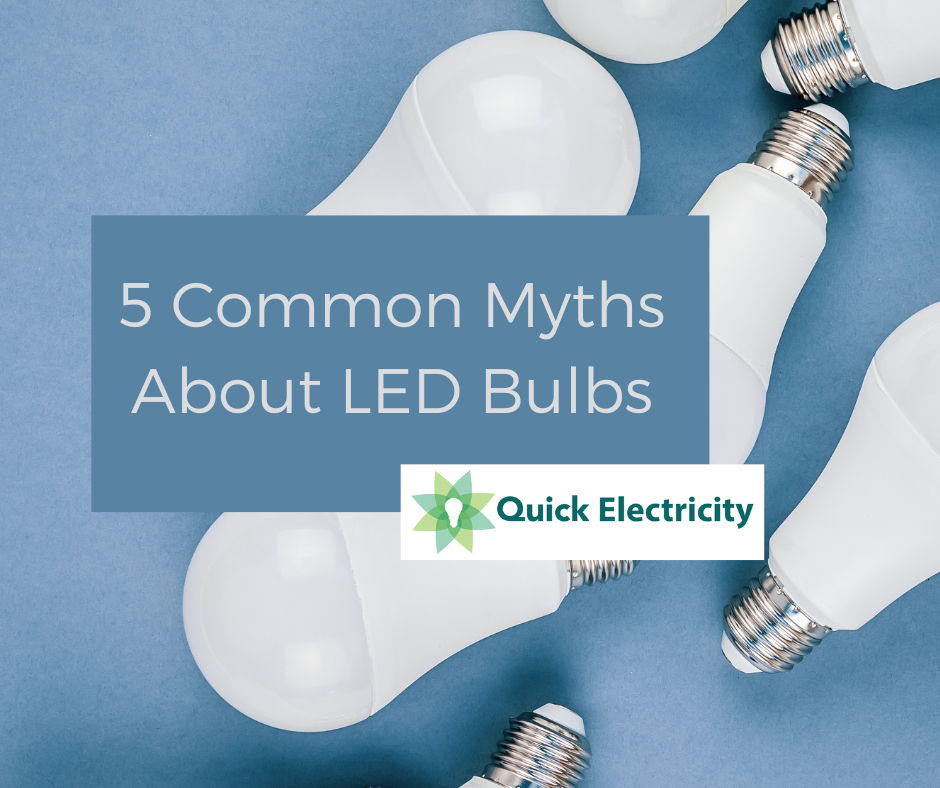

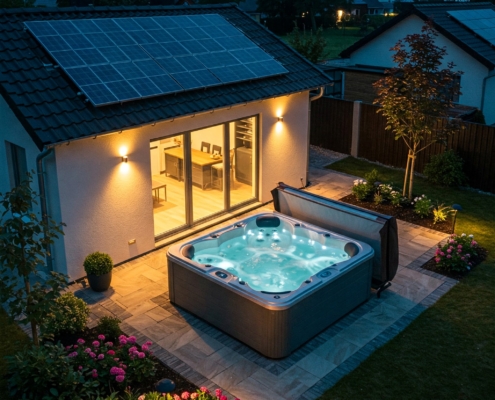
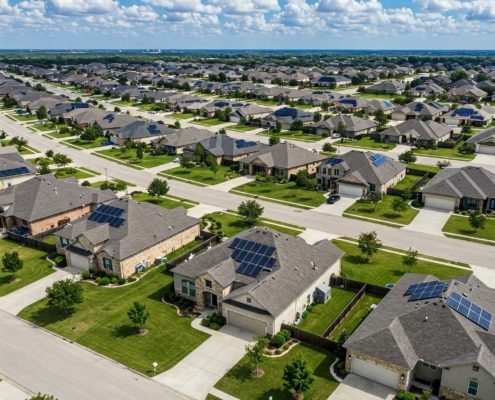


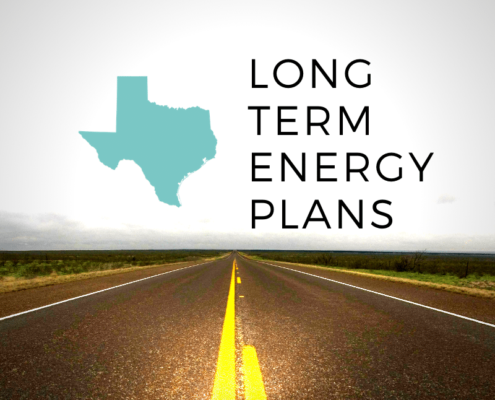


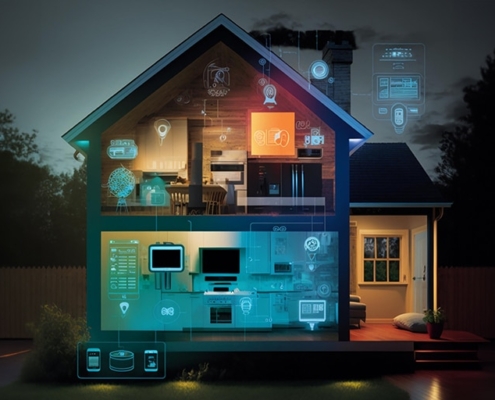
Leave a Reply
Want to join the discussion?Feel free to contribute!